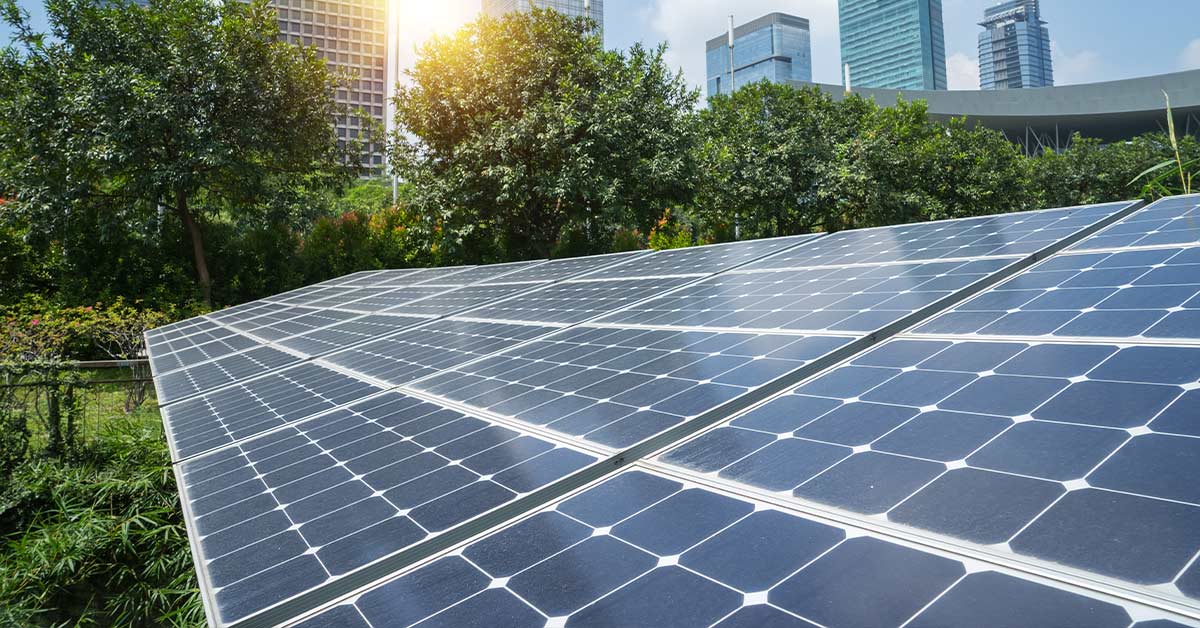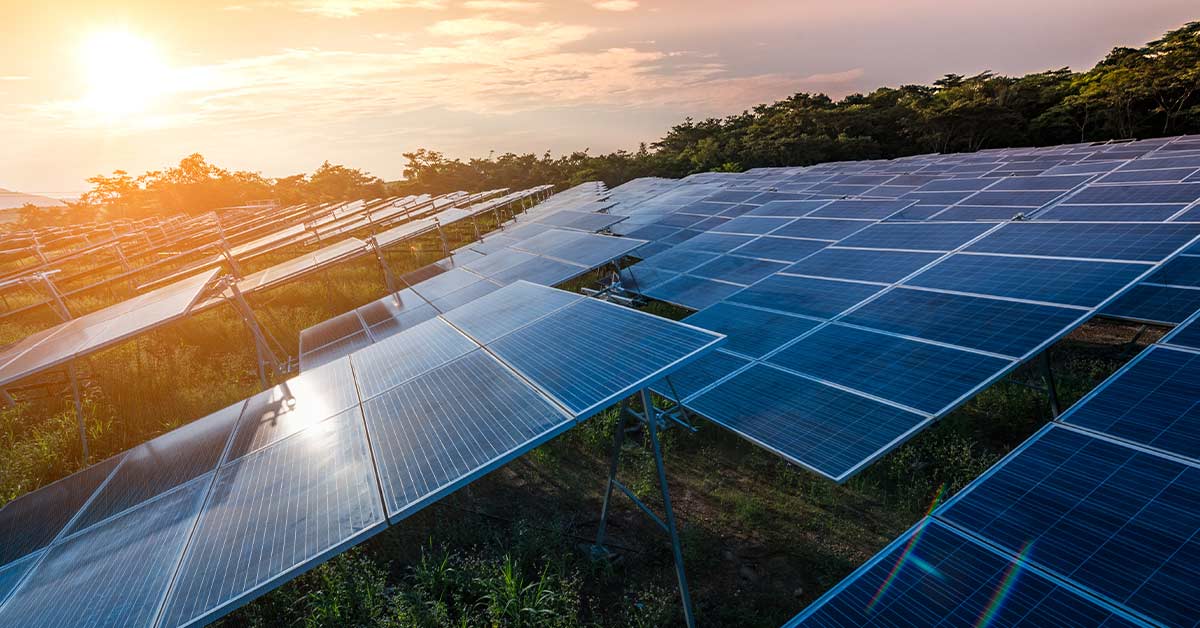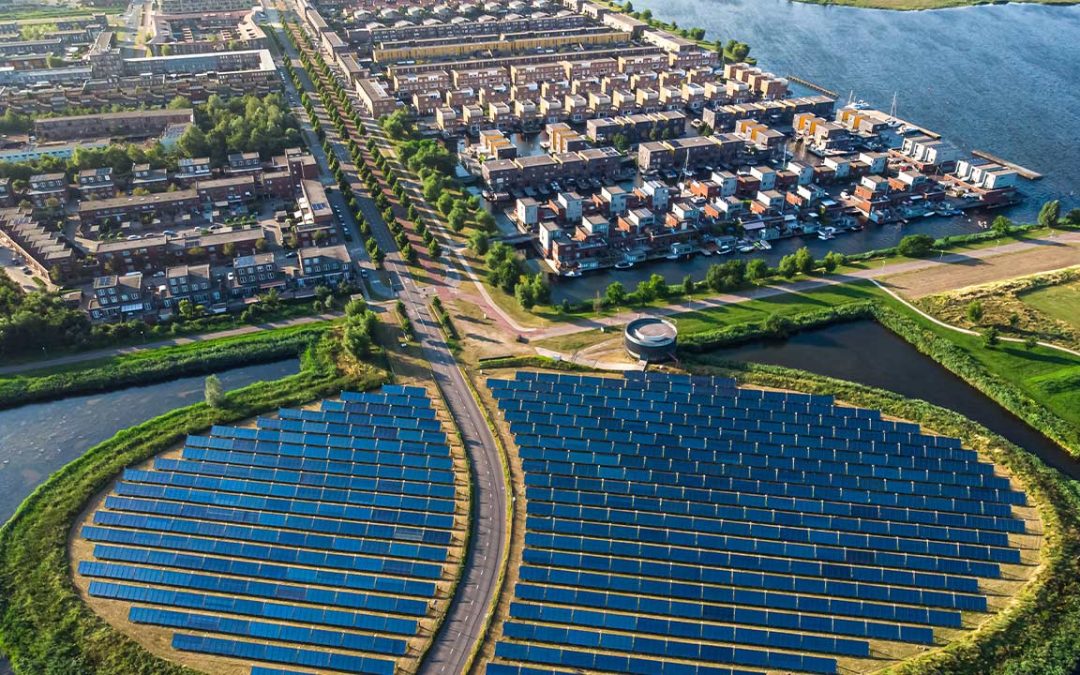While solar energy has continued climbing in popularity over the last few years, it’s still impossible for almost half of all households and businesses in the country. Because such a large section of the market cannot access solar via on-site installation, other options have emerged to make the benefits of solar energy accessible to more buildings. This solution is called Community Solar, which allows multiple customers to share energy produced by a solar array. These shared solar projects are growing in 41 states and Washington D.C. as the perfect alternative for anyone who cannot or does not want a solar system on their roof, such as renters. Today, Trinity Wiring Solutions will examine three different structural solutions for community solar, including their operation and complexities that participants should consider.
How do community solar farms work?
According to the NREL, community solar is a distributed solar energy deployment allowing customers to buy or lease a section of a larger, off-site shared solar photovoltaic (PV) system. Community solar is used across the globe and is also known as shared solar gardens or solar power plants. Most shared solar installations produce electricity that feeds into the local power grid.
Models
Community solar projects come in a variety of forms and because the sector is still emerging, new approaches may arise. However, a few dominant models for community solar have been developed.

How Members Participate: Subscription vs. Ownership Models
Community solar arrangements are offered within two overarching categories: ownership and subscription models. Within an ownership model, customers purchase particular panels or a share of panels in the array to meet their personal energy needs. These projects require participants to pay upfront for their portion of energy and participants receive credit for the actual amount of energy their portion produces, as either a credit on their utility or an alternative arrangement.
Under a subscription model, the solar project is owned by a third party company or the local utility, and community members subscribe to a portion of the produced energy. Usually, subscription models do not require upfront fees to join, offering immediate savings because these subscriptions to solar are often a lower rate than the regular local utility bill. This model grants low-income communities access to solar due to the omittance of upfront costs.
Who Administers Community Solar Projects?
Depending on whether customers decide to subscribe or own a portion of a solar project, there are also different administration models for community solar. There are three popular models for community solar: utility-sponsored, special-purpose entity (SPE), and nonprofit.
Under a utility-sponsored model, a utility company owns or operates the community solar project and offers voluntary participation to customers. Many projects offer customers the option to pay upfront or make subscription payments in return for a credit on their utility bill equating the amount of energy produced. This type of model allows participants to buy the rights to the benefits of an energy share but not an ownership stake in the project itself.
The special-purpose entity (SPE) model is developed by a group of individuals who collaborate as a business enterprise. Some solar projects are developed in this way because a registered business enterprise can utilize tax incentives such as the Investment Tax Credit, which does not apply to tax-exempt nonprofits and certain for-profit utilities. However, anyone developing this project will also have to deal with the financial and legal obligations of owning a business that complies with the appropriate regulations.
Lastly, another popular approach involves a nonprofit that administers the project on behalf of donors or members. Nonprofits could choose to develop the project by sharing benefits with participant members or partnering with a for-profit third party that owns the system and takes advantage of the tax incentives. Alternatively, nonprofits can solicit donations and grants to raise funds for the development of the project, which may not directly benefit donors, but is ideal for nonprofits who are looking to contribute philanthropically and environmentally in the energy sector.

Complexities of Community Solar
Even within these approaches, not every community solar project operates similarly due to federal and state investment laws and regulations. For example, enterprises that make transactions involving financial investment with the expectation of earning a profit through someone who isn’t the investor are subject to particular securities regulations. It may take a longer time and higher cost than anticipated to ensure a project complies with all these regulations because failure to do so will make participants liable.
Because of these complexities, the developers of community solar projects typically ensure their project is legally not a traditional, taxable investment subject to securities law. This results in a different set of rules for project participation. For example, many projects may limit their participants to a particular geographic area and place a cap on the amount of energy participants can utilize.
Why Community Solar Matters
Because community solar grants a greater portion of the population access to solar energy, it’s become a quickly growing industry that will only continue to increase in popularity as renewable sources are here to stay. Solar capacity is anticipated to more than double through 2026, and it will only continue expanding with the creation and expansion of state and federal programs.
Trinity Wiring Solutions is ready to install solar panel projects for individual and community projects. We’re excited to witness the equity implications that sustainable, domestic energy offers to people across all incomes. Community projects help make solar energy more affordable for everyone. Contact us today to begin!
